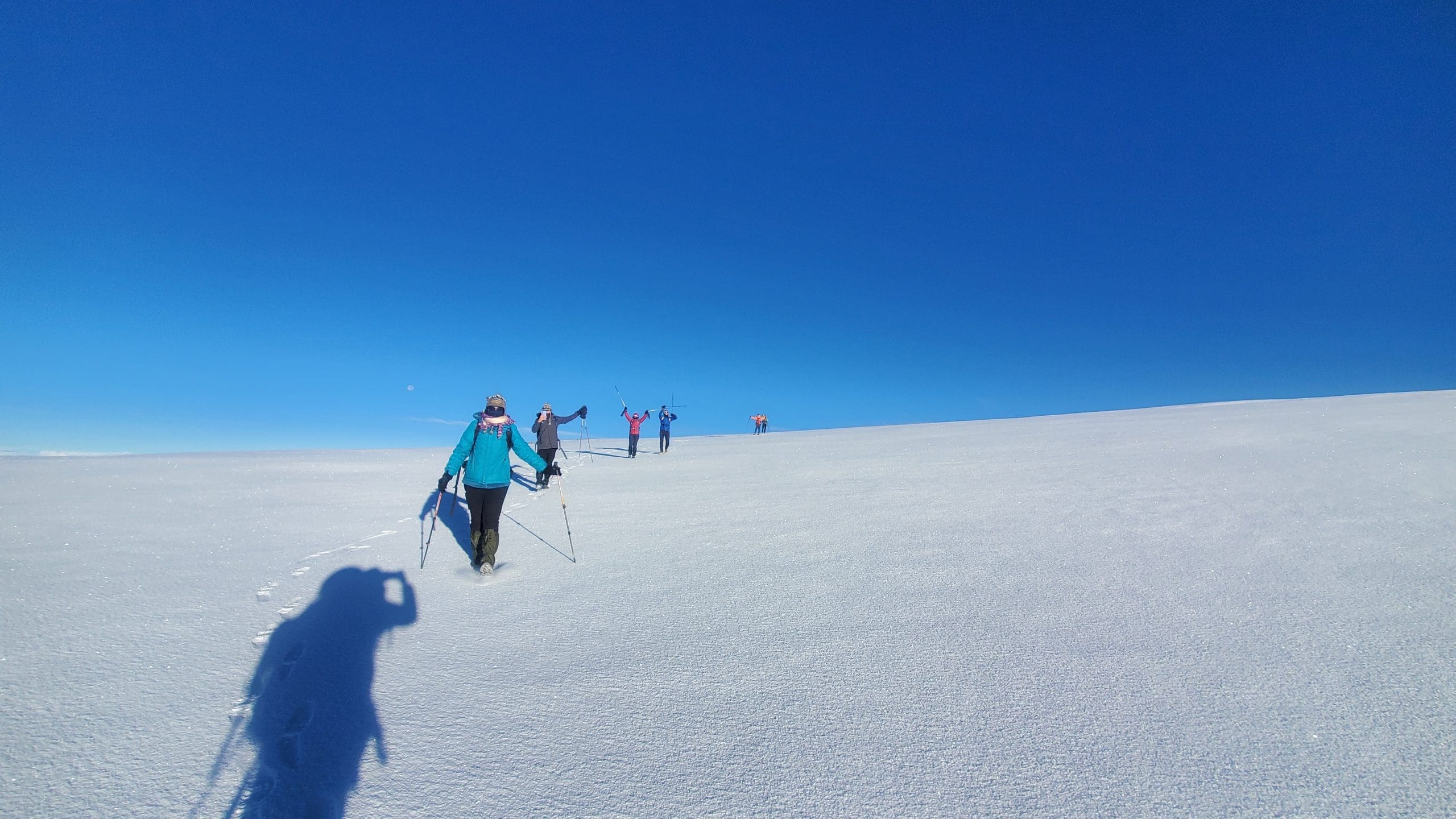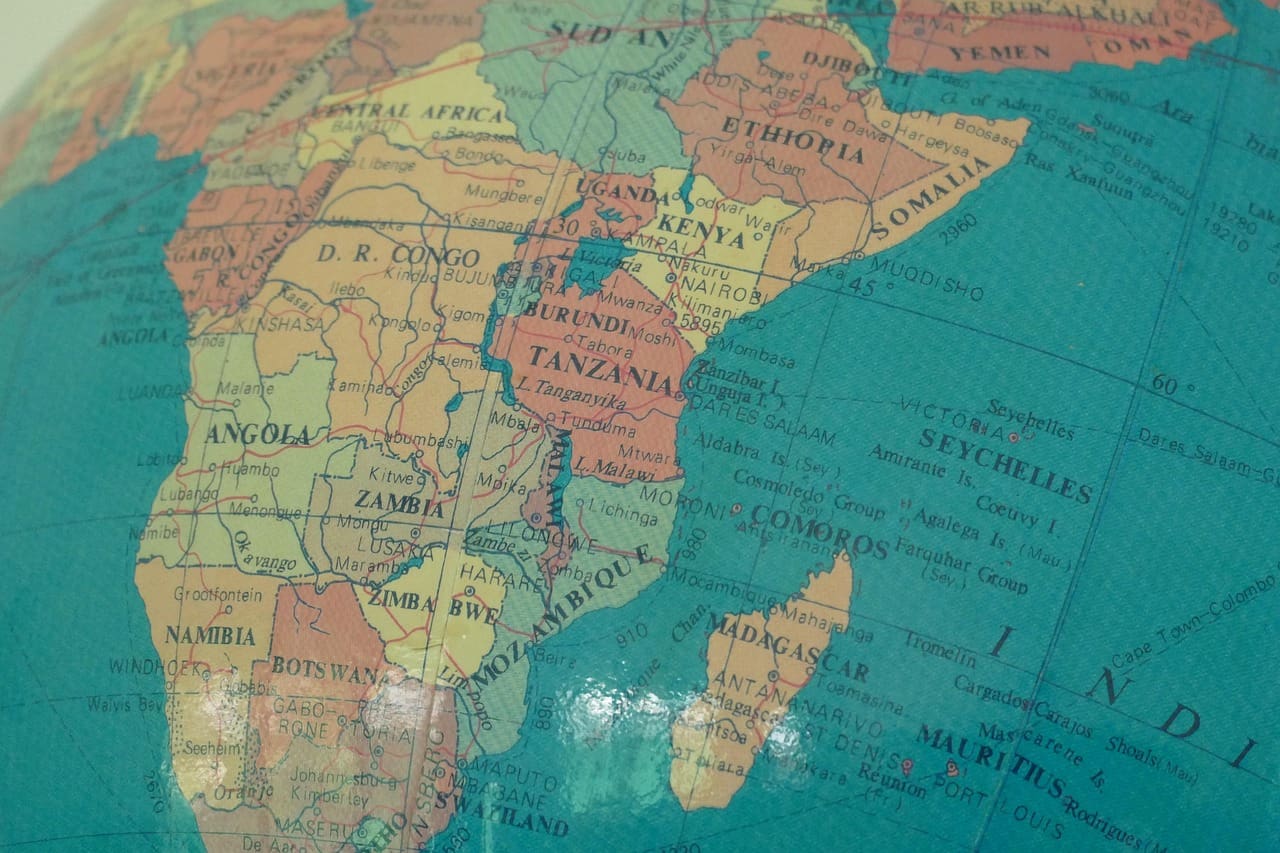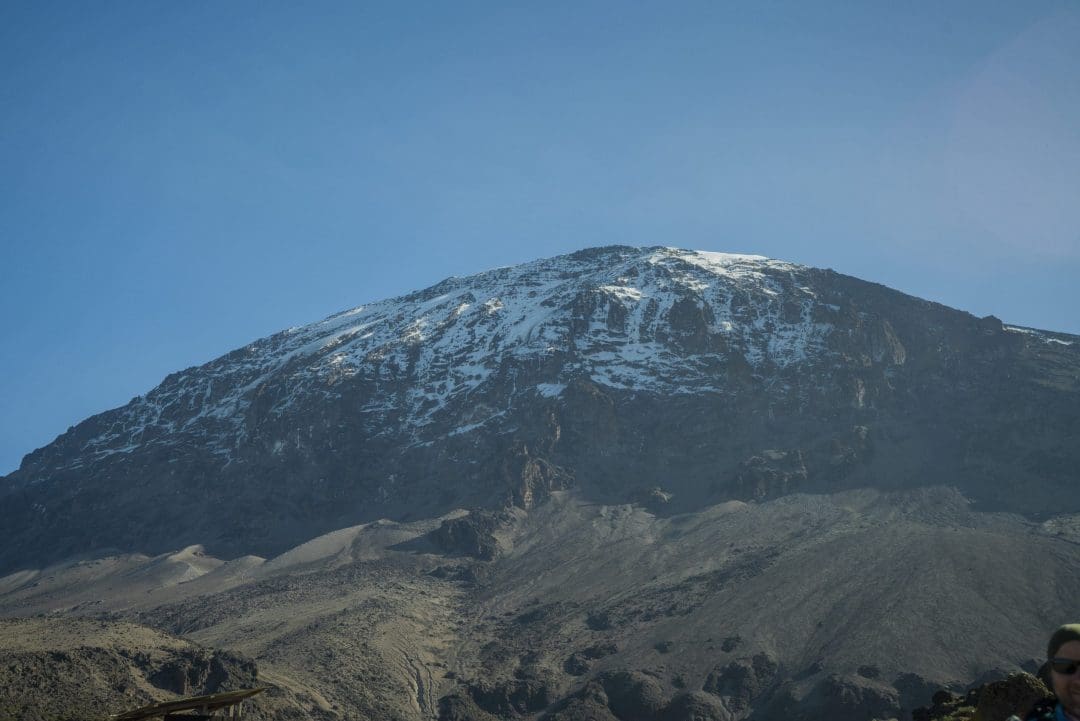When people hear of volcanoes, all they think of is fire and explosive eruptions, but there is more to them than destruction.
For instance, when asked which mountain is the tallest, people instantly think of Mount Everest. But the truth is that Mauna Kea, a volcano in Hawaii, is taller than Everest when you measure its height from its base on the ocean floor to its summit. And Mauna Kea isn’t even the largest volcano in the world.
This is just one of the fascinating aspects of these geological masterpieces.
Beyond being natural wonders, volcanoes have had a profound impact on human life. From energy and farming to migration, they have shaped many parts of our world and economies.
Ranking the World’s Largest Volcanoes
There are three methods for measuring and ranking volcanoes. The first is ranking by elevation above sea level. The second is ranking by their base-to-summit height, while the third and most commonly used method is ranking according to the total volume.
For this list, we focus on the total volume metric because it provides a clear picture of their size and the space they occupy.
1. Mauna Loa - United States
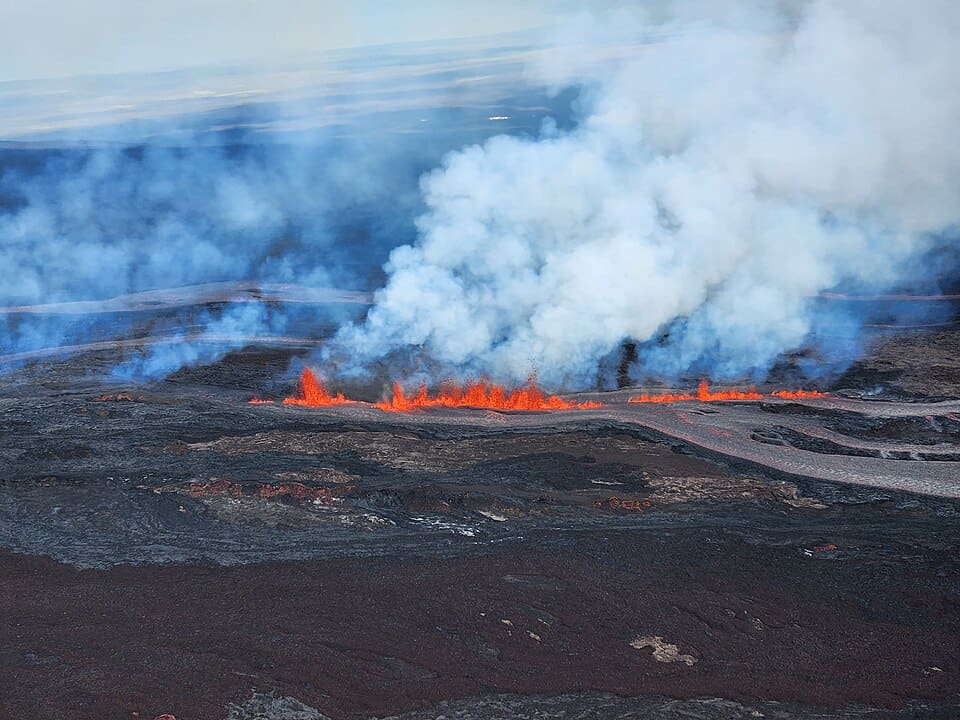
Located on the island of Hawaii, Mauna Loa has a total volume of approximately 18,000 cubic miles (75,000 km³), making it the largest volcano in the world.
There have been contradicting views on which volcano is the largest. Some believe that Tamu Massif or Puhahonu should take that spot. However, the truth is that Puhahonu is now extinct because it is no longer capable of erupting. As for Tamu Massif, there are debates about whether it is a single shield volcano or a mid-ocean ridge complex. This makes Mauna Loa the largest volcano in the world.
Mauna Loa is very active and has erupted approximately 34 times since 1843, with the most recent eruption occurring in 2022.
2. Mauna Kea - United States

Also located on the island of Hawaii, Mauna Kea has a total volume of approximately 7,680 cubic miles (32,000 km³), making it the second-largest volcano in the world. Additionally, Mauna Kea is the tallest mountain in the Hawaiian Islands.
Mauna Kea is home to several telescope stations due to its clear, dry atmosphere and high altitude.
Mauna Kea is dormant and last erupted about 4,500 years ago.
3. Haleakalā - United States

Also known as the East Maui volcano, Haleakalā is situated on the Island of Maui.
Haleakalā has a total volume of 6,960 cubic miles (29,000km³) and, like Mauna Kea, it is dormant, having its last eruption in the 1700s.
Haleakalā National Park is a popular destination renowned for its incredible landscape, stunning views, and rare wildlife. The park is also home to rare plants and animals, including silverswords and the Hawaiian Goose.
4. Mount Kilimanjaro - Tanzania
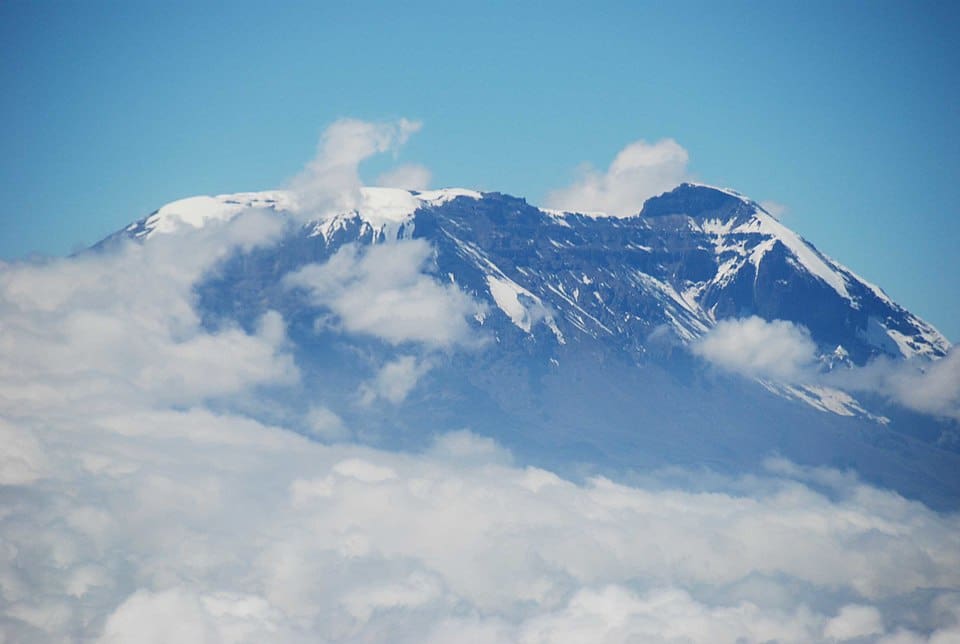
With an estimated volume of 1,150 cubic miles (~4,800km³), Mount Kilimanjaro takes the fourth spot. Additionally, it is the world’s tallest free-standing mountain, making it a popular destination for hikers.
One of the things that makes Kilimanjaro unique is its weather. When climbing Mount Kilimanjaro, hikers experience different climate zones, ranging from forests to deserts and then icy zones near the summit.
There has been an argument about whether Kilimanjaro is extinct because it has been thousands of years since it last erupted. However, there is no evidence that Kilimanjaro’s magma system is completely shut down. Therefore, the mountain is dormant, not extinct.
Lorem ipsum dolor sit amet, consectetur adipiscing elit. Ut elit tellus, luctus nec ullamcorper mattis, pulvinar dapibus leo.
5. Erebus - Antarctica

Named after a British Navy Ship, Erebus takes the fifth spot with a total volume of 408 cubic miles (1,700 km³).
One of the things that makes Erebus special is its ever-bubbling lava lake at its summit. The lava lake stays hot even in freezing Antarctic temperatures, making it one of the most active volcanoes in the world. As a result, it has become a popular site for scientists seeking to understand how volcanoes function in extreme conditions.
6. Mount Cameroon - Cameroon
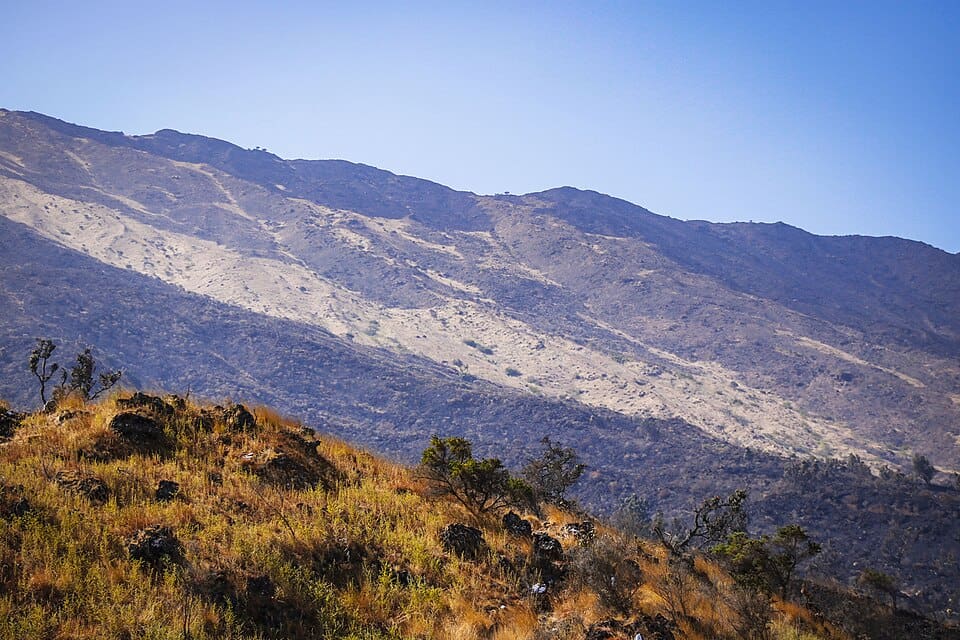
Mount Cameroon has a total volume of about 312 cubic miles (1,300 km³). The mountain is active and has erupted 19 times, with the most recent eruption happening in February 2012.
For the locals, Mount Cameroon is more than a mountain. They call it the chariot of the gods, with the belief that the hill is the dwelling place of the mountain god.
Mount Cameroon has a rich wildlife and is home to two distinct bird species: The Cameroon Spurfowl and the Cameroon Speirops. The mountain is also a popular tourist attraction, hosting an annual race known as the Race of Hope.
7. Sierra Negra - Ecuador
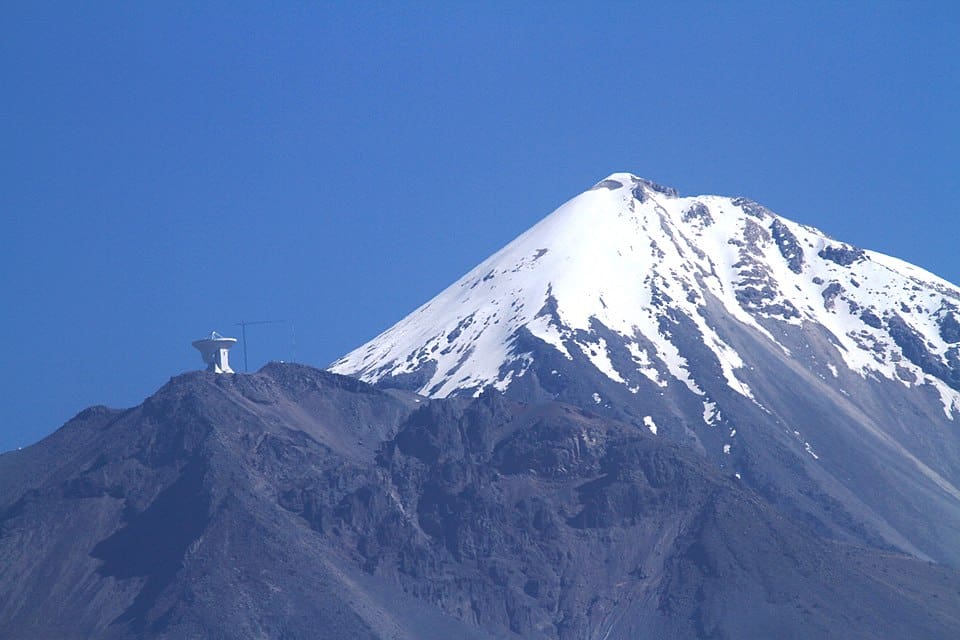
Located in the Galapagos Islands, Sierra Negra has an estimated volume of 240 cubic miles (1,000 km³).
Sierra Negra is renowned for its massive caldera, which spans approximately 10 kilometres in width and is one of the largest craters in the world. Although Sierra Negra is an active volcano, it is a popular site for hikers.
8. Wolf Volcano - Ecuador
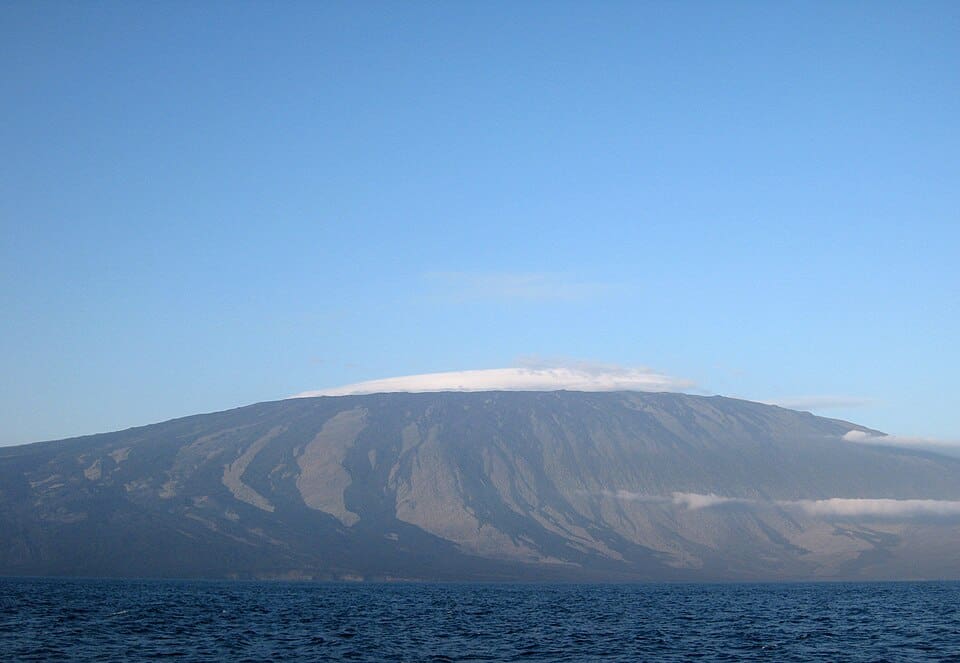
Like Sierra Negra, Wolf Volcano is on the Galapagos Islands. The Wolf volcano has a total volume of approximately 800 cubic kilometres (192 cubic miles). It is one of the most active volcanoes in the Galapagos Islands, with its last eruption occurring in 2022.
What makes Wolf Volcano unique is that it’s home to rare pink iguanas, which live only on its slopes and nowhere else. Although the mountain is remote and rugged to reach, it remains one of the most critical sites for both geology and wildlife conservation.
9. Nyamuragira - Democratic Republic of Congo

Nyamuragira has a total volume of 120 cubic miles (500km³), making it one of the largest volcanoes in Africa.
Nyamuragira is active with over 40 eruptions in the past 150 years. Unlike most mountains that erupt from their summit, Nyamuragira usually erupts from the cracks on its sides, creating lava flows that spread far and wide.
10. Mount Etna - Italy

Lying on the coast of Sicily, Mount Etna has a volume of approximately 96 cubic miles (400km³). This makes it the largest volcano in Europe in terms of volume. It also doubles as the tallest volcano in Europe.
Etna is very active, erupting several times a year. The constant eruption has enriched the soil around it, and locals utilise this for farming activities.
Another thing that makes Etna unique is its peak. The peak has multiple craters, rivers of lava, and snow all at once.
Most Active Volcano in the World

A volcano is considered active if it has erupted within the last 10,000 years and exhibits signs that it may erupt again. These signs include the release of gas, rising heat, and earthquakes near the summit.
The most active volcano in recent times is Kilauea in Hawaii. Since 2018, the mountain has been experiencing episodes of volcanic eruptions, with steady lava flows destroying roads and homes.
While most eruptions at Kilauea have been slow and steady, some volcanoes erupt with massive explosions that alter not only the terrain of their environment but also the surrounding landscape.
For example, in 1815, Mount Tambora in Indonesia had the largest volcanic eruption in human history. The mountain erupted with such force that the volcanic ash darkened the skies and caused what became known as the Year Without a Summer. Crops failed, temperatures dropped, and people around the world suffered.
Using the Volcanic Explosion Index (VEI), scientists gave the eruption a rating of 7 out of a possible 8.
Additionally, in 1883, Krakatoa erupted with such force that its sound was heard over 3,000 miles away. The eruption triggered tsunamis that claimed the lives of tens of thousands of people. This eruption has a VEI rating of 6, making it one of the most significant volcanic eruptions in recorded history.
Most recently, in July 2025, Mount Lewotobi Laki-Laki in Indonesia experienced a violent eruption that produced a staggering 18 km ash plume. This led to the cancellations of flights in Bali.
Volcanic vs Non-Volcanic Mountains
All volcanoes are mountains, but not all mountains are volcanoes. The primary difference between them lies in how they are formed.
Volcanic mountains are formed when molten rock escapes from the Earth’s interior and erupts to the surface. Over time, the lava cools and builds up into a mountain. This can occur several times, with each eruption increasing height.
Other mountains, on the other hand, are formed when tectonic plates crash and push the land upward. Most of the oldest mountains in the world were formed this way.
Is Everest Volcanic?
No, Mount Everest is not volcanic. As the tallest mountain in the world, many people assume that Everest is volcanic. However, the mountain has never erupted, nor does it show any signs that it will erupt in the future.
In Closing
From being a site for outdoor activities like hiking to providing rich soil for farming, Volcanoes have influenced and will continue to impact human lives. And it doesn’t matter whether they are sitting quietly on an Island or continuously erupting; they remain one of the most potent forces of nature.
Frequently Asked Questions
How many types of volcanoes are there?
There are four main types of volcanoes: Shield Volcanoes, Stratovolcanoes (also called Composite cones), Cinder Cones, and Lava Domes.
Which country has the most significant number of volcanoes?
Indonesia has the most significant number of volcanoes, with over 130 active volcanoes. This is because the country is situated on the Pacific Ring of Fire, where several tectonic plates converge.
How often do volcanoes erupt?
Globally, there are about 50-70 volcanic eruptions every year.





